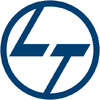Filter interviews by
J. Kumar Infraprojects Safety Officer Interview Questions, Process, and Tips
J. Kumar Infraprojects Safety Officer Interview Experiences
2 interviews found
I appeared for an interview in Jan 2025.
(2 Questions)
- Q1. How much type of lifting crane
- Ans.
There are several types of lifting cranes used in various industries.
Mobile cranes
Tower cranes
Overhead cranes
Telescopic cranes
Loader cranes
- Q2. How much type of lifting
- Ans.
There are two main types of lifting: manual lifting and mechanical lifting.
Manual lifting involves lifting objects by hand, without the use of equipment.
Mechanical lifting involves using equipment such as cranes, forklifts, or hoists to lift heavy objects.
Proper training and techniques are essential to prevent injuries during lifting.
Examples of manual lifting include lifting boxes, bags, or furniture.
Examples of mecha...
I applied via Approached by Company and was interviewed in Feb 2022. There was 1 interview round.
(3 Questions)
- Q1. What is fire, classes of fire?
- Ans.
Fire is a chemical reaction that releases heat, light, and gases. There are 6 classes of fire based on the fuel involved.
Fire is a rapid oxidation process that produces flames, heat, and smoke.
The 6 classes of fire are Class A, B, C, D, E, and F.
Class A fires involve ordinary combustible materials like wood, paper, and cloth.
Class B fires involve flammable liquids or gases like gasoline, oil, and propane.
Class C fires ...
- Q2. Classification Of Fire?
- Ans.
Classification of fire refers to categorizing fires based on the type of fuel involved.
Fires are classified into different classes based on the type of fuel they involve.
There are six classes of fire: Class A, Class B, Class C, Class D, Class K, and Class F.
Class A fires involve ordinary combustible materials like wood, paper, and cloth.
Class B fires involve flammable liquids like gasoline, oil, and grease.
Class C fire...
- Q3. Causes Of Electrocution?
- Ans.
Electrocution can be caused by various factors such as direct contact with live electrical wires, faulty electrical equipment, and inadequate grounding.
Direct contact with live electrical wires
Faulty electrical equipment
Inadequate grounding
Improper use of electrical appliances
Overloaded circuits
Exposed electrical parts
Damaged insulation on wires
Improper installation of electrical systems
Lightning strikes
Interview Preparation Tips
- Hot Work
- Electrical Works
Interview questions from similar companies

I applied via Referral and was interviewed before Feb 2021. There was 1 interview round.
(3 Questions)
- Q1. Tell me about yourself.
- Q2. What are your salary expectations?
- Q3. What is your family background?
Interview Preparation Tips

I applied via Naukri.com and was interviewed in Dec 2017. There were 4 interview rounds.
Interview Questionnaire
3 Questions
- Q1. Tell me about your self
- Ans.
Experienced safety officer with a background in industrial safety protocols and emergency response procedures.
Over 5 years of experience in implementing safety measures in industrial settings
Proficient in conducting safety audits and inspections to ensure compliance with regulations
Skilled in developing and implementing safety training programs for employees
Strong knowledge of emergency response protocols and procedure...
- Q2. Duties of safety Officer
- Ans.
Safety Officers are responsible for ensuring the safety of employees in the workplace by implementing safety protocols and procedures.
Develop and implement safety policies and procedures
Conduct regular safety inspections and audits
Investigate accidents and incidents to determine root causes
Provide safety training to employees
Ensure compliance with safety regulations and standards
Maintain safety records and reports
- Q3. Working improvement
Interview Preparation Tips
Experience: Written test
General Tips: Expended
Skills: Self-Awareness
Duration: <1 week

Safety Officer Interview Questions & Answers
Kalpataru Projects Internationalposted on 19 Apr 2022
I applied via LinkedIn and was interviewed before Apr 2021. There were 2 interview rounds.

(3 Questions)
- Q1. Tell me about yourself.
- Ans.
I am a dedicated Safety Officer with a strong background in ensuring workplace safety and implementing safety protocols.
Experienced in conducting safety inspections and risk assessments.
Proficient in developing and implementing safety training programs.
Skilled in investigating accidents and incidents to identify root causes and prevent future occurrences.
Knowledgeable in maintaining safety records and ensuring complian...
- Q2. Nothing to said anything
- Q3. Nothing to said anything...
Interview Preparation Tips
- EHS Management

Safety Officer Interview Questions & Answers
Larsen & Toubro Limitedposted on 12 Jun 2020
Interview Questionnaire
2 Questions
- Q1. About work experience. i.e HIRA,SOP,
- Q2. Basis knowledge.

Interview Questionnaire
3 Questions
- Q1. What's Safety policy ?
- Ans.
Safety policy is a set of guidelines and procedures designed to ensure the safety of employees and prevent accidents in the workplace.
Safety policy outlines the responsibilities of employees and management in maintaining a safe work environment.
It includes procedures for identifying and reporting hazards, conducting safety training, and responding to emergencies.
Examples of safety policies include wearing personal prot...
- Q2. What's Height work ?
- Q3. What's Emergency plan ?
- Ans.
Emergency plan is a set of procedures and guidelines to be followed in case of an emergency or disaster.
It outlines the roles and responsibilities of individuals and teams during an emergency
It includes evacuation procedures, communication protocols, and emergency contacts
It should be regularly reviewed and updated to ensure its effectiveness
Examples include fire evacuation plans, severe weather plans, and active shoot

I applied via Naukri.com and was interviewed before Aug 2020. There were 3 interview rounds.
Interview Questionnaire
2 Questions
- Q1. Intro, safety officer roles and responsibilities
- Q2. Co gas limit
- Ans.
The CO gas limit is the maximum allowable concentration of carbon monoxide in the air.
The CO gas limit is set by regulatory agencies to protect human health and safety.
The limit varies depending on the location and type of facility.
For example, the Occupational Safety and Health Administration (OSHA) has set a permissible exposure limit (PEL) of 50 parts per million (ppm) for an 8-hour workday.
In residential homes, the...
Interview Preparation Tips

I applied via Walk-in and was interviewed in May 2024. There was 1 interview round.
(5 Questions)
- Q1. What is responsibility safety officer
- Ans.
Safety officers are responsible for ensuring the safety of employees, visitors, and the workplace environment.
Developing and implementing safety policies and procedures
Conducting regular safety inspections and audits
Providing safety training to employees
Investigating accidents and incidents to determine causes and prevent future occurrences
Ensuring compliance with safety regulations and standards
- Q2. How many types of fire extinguisher
- Ans.
There are five main types of fire extinguishers: water, foam, dry powder, CO2, and wet chemical.
Water fire extinguishers are suitable for Class A fires involving solid materials like wood or paper.
Foam fire extinguishers are effective for Class A and B fires involving flammable liquids like petrol or oil.
Dry powder fire extinguishers are suitable for Class A, B, and C fires involving flammable gases.
CO2 fire extinguish...
- Q3. How many types of permit
- Ans.
There are various types of permits required for different activities in a workplace.
Work Permit - for tasks like hot work, confined space entry, etc.
Electrical Permit - for electrical work like installations, repairs, etc.
Excavation Permit - for digging or excavation work.
Permit to Work at Height - for tasks performed at elevated locations.
Permit to Work with Hazardous Materials - for handling dangerous substances.
Perm...
- Q4. How many types hazard control methods
- Ans.
There are three main types of hazard control methods: engineering controls, administrative controls, and personal protective equipment (PPE).
Engineering controls involve physically changing the workplace to reduce or eliminate hazards, such as installing machine guards or ventilation systems.
Administrative controls focus on changing work practices or policies to minimize exposure to hazards, such as implementing safety...
- Q5. Why important PPE work at site work place
Interview Preparation Tips

I applied via Recruitment Consulltant and was interviewed in Oct 2024. There were 2 interview rounds.
(2 Questions)
- Q1. What are precautions of work at height
- Ans.
Precautions for working at height include proper training, use of fall protection equipment, regular inspection of equipment, and securing tools and materials.
Ensure workers are properly trained on working at height procedures
Use appropriate fall protection equipment such as harnesses, lanyards, and guardrails
Regularly inspect all equipment used for working at height to ensure it is in good condition
Secure tools and ma...
- Q2. What are you know about lifting plan.
- Ans.
A lifting plan is a detailed document outlining the procedures and precautions to be taken when lifting heavy objects.
A lifting plan should include the weight of the object being lifted
It should specify the equipment to be used for lifting
The plan should outline the steps to be taken to ensure the safety of workers involved
It should also consider factors such as the location of the lift and any potential hazards
Regular...
(2 Questions)
- Q1. What is risk assessment
- Ans.
Risk assessment is the process of identifying, analyzing, and evaluating potential risks in order to determine the likelihood and impact of harmful events.
Identifying potential hazards and risks in the workplace or environment
Analyzing the likelihood of these risks occurring
Evaluating the potential impact of these risks on people, property, and the environment
Developing strategies to mitigate or eliminate these risks
Re...
- Q2. How to calculate capacity of wire rop sling
- Ans.
Capacity of wire rope sling can be calculated by considering factors like diameter, material, and configuration.
Capacity is determined by the breaking strength of the wire rope and the design factor used.
Calculate the breaking strength of the wire rope by multiplying the area of the rope cross-section by the tensile strength of the material.
Consider the configuration of the sling (single leg, double leg, etc.) and appl...
J. Kumar Infraprojects Interview FAQs
Tell us how to improve this page.
J. Kumar Infraprojects Interviews By Designations
- J. Kumar Infraprojects Civil Engineer Interview Questions
- J. Kumar Infraprojects Civil Foreman Interview Questions
- J. Kumar Infraprojects Senior Engineer Interview Questions
- J. Kumar Infraprojects Safety Officer Interview Questions
- J. Kumar Infraprojects Safety Supervisor Interview Questions
- J. Kumar Infraprojects Asst Store Interview Questions
- J. Kumar Infraprojects Quality Engineer Interview Questions
- J. Kumar Infraprojects QA QC Engineer Interview Questions
- Show more
Interview Questions for Popular Designations
- Safety Supervisor Interview Questions
- Fire & Safety Officer Interview Questions
- Senior Safety Officer Interview Questions
- Safety Engineer Interview Questions
- Safety Manager Interview Questions
- Drug Safety Associate Interview Questions
- Safety Supervisor, Safety Officer Interview Questions
- Safety Executive Interview Questions
- Show more
J. Kumar Infraprojects Safety Officer Interview Process
based on 3 interviews
Interview experience
Safety Officer Interview Questions from Similar Companies
J. Kumar Infraprojects Safety Officer Reviews and Ratings
based on 30 reviews
Rating in categories
|
Junior Engineer
176
salaries
| ₹2 L/yr - ₹4.8 L/yr |
|
Senior Engineer
168
salaries
| ₹4.4 L/yr - ₹11.6 L/yr |
|
Civil Engineer
168
salaries
| ₹2.2 L/yr - ₹9 L/yr |
|
Civil Site Engineer
149
salaries
| ₹2 L/yr - ₹6.4 L/yr |
|
Junior Engineer Civil
111
salaries
| ₹2 L/yr - ₹5 L/yr |

Larsen & Toubro Limited

Tata Projects

L&T Construction

Kalpataru Projects International
- Home >
- Interviews >
- J. Kumar Infraprojects Interview Questions >
- J. Kumar Infraprojects Safety Officer Interview Questions


















